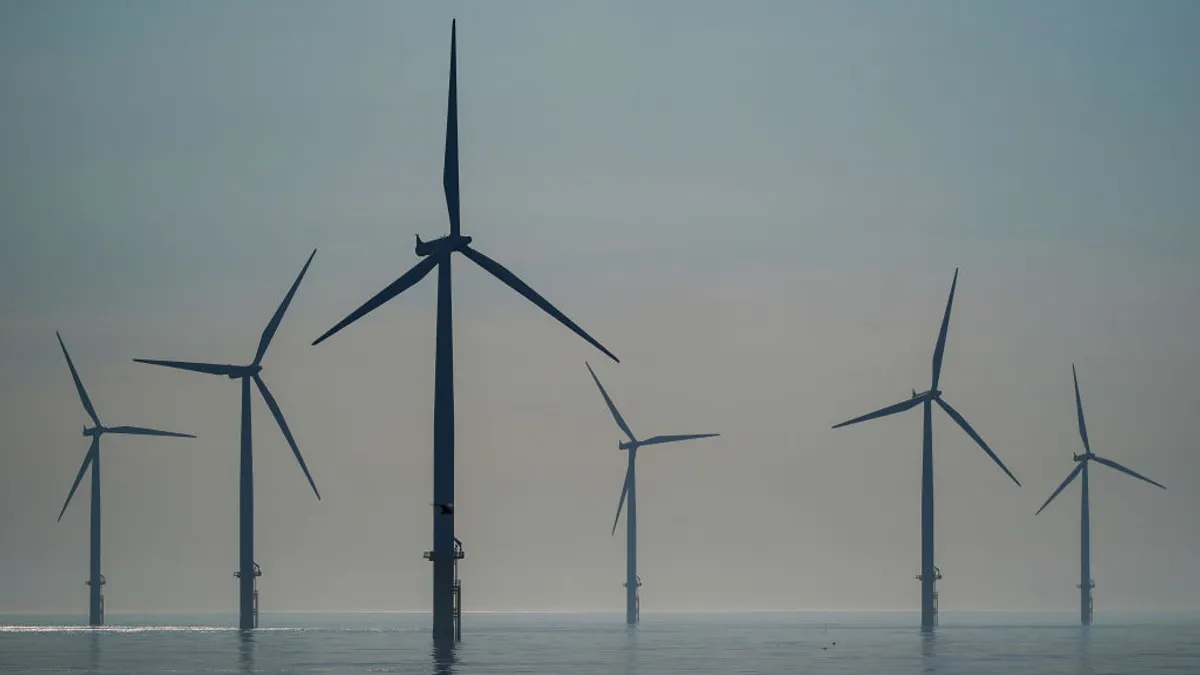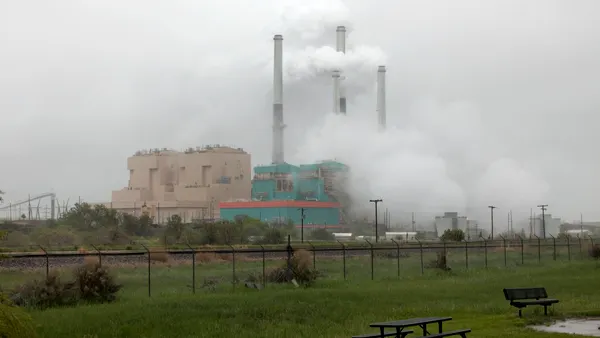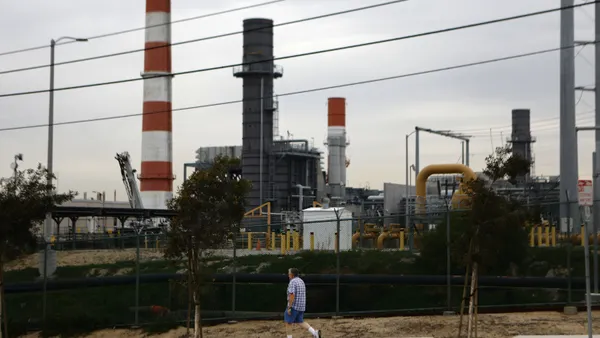Dive Brief:
- If the 3.5 GW of wind energy projects currently contracted offshore New England had been operational last winter, it could have offset the surge in natural gas prices that season and saved ratepayers a total of $400 million on their energy bills, according to a Wednesday report from Daymark Energy Advisors.
- The report estimated that “savings exceeded [power purchase agreement] costs across all scenarios, yielding annual bill savings of $1.32 to $2.68 per month for an average Eversource [Energy] residential customer.”
- RENEW Northeast, the group that commissioned the report, noted that ISO New England released a report last month which found gas prices in spring 2025 averaged $3.40 per million British thermal units, 112% higher than the spring 2024 price of $1.60/MMBtu.
Dive Insight:
The report examines the “potential regional market and Massachusetts ratepayer impacts” if 3.5 GW of offshore wind had been generating power between Dec. 2024 and Feb. 2025.
“Even using the most conservative assumptions about cleared offers in Forward Capacity Auction 15 … clearing additional qualified capacity from OSW would have reduced FCA15 costs by at least $128 million, with 83% ($106 million) allocable to Massachusetts load zones,” the report said.
Daymark Energy Advisors found that “injecting near-zero marginal cost offshore wind into the energy market would have reduced ISO-NE Locational Marginal Prices by 11% ($12.60/MWh), reducing wholesale load costs across New England by roughly $400 million. Roughly $129 million of the regional savings would have been allocable to [Massachusetts electric distribution companies].”
Last winter was the “first since 2014 to see below-normal temperatures over the course of an entire season,” ISO-NE said in an April release, and natural gas prices rose in accordance with demand.
President Donald Trump and New England leaders like Connecticut Gov. Ned Lamont, D, and New Hampshire Gov. Kelly Ayotte, R, have suggested the region build a new natural gas pipeline to curb the high cost of energy.
“They have no way of getting [the natural gas] there because it’s been held up by New York,” Trump said in March.
Ayotte has shown reticence about offshore wind development, and signed a bill earlier this month that eliminated language requiring the state’s Office of Energy Innovation to support offshore wind development. Lamont has also shown hesitance about offshore wind, with Connecticut opting not to procure any new offshore wind projects during a 2024 joint solicitation between Massachusetts, Rhode Island and Connecticut.
However, Lamont told CNBC on Tuesday that the Trump administration’s decision to halt work on the 700-MW Revolution Wind project under construction offshore Rhode Island and Connecticut was “sudden, erratic and insane” and said he will try to strike a deal with the administration to keep the project going.
Interior Secretary Doug Burgum said in May that New York Governor Kathy Hochul had indicated “her willingness to move forward on critical pipeline capacity” for natural gas, after Hochul negotiated with the Trump administration to lift a stop work order on the 810-MW Empire Wind 1 project offshore New York.
Daymark’s report noted that the deployment of emission-free offshore wind “would have offset natural gas, oil and coal-fired generation, reducing fossil fuel burned by 34 million MMBtu over the 3-month period.”
This would result in greenhouse gas emissions savings of 1.8 million tons, “equivalent to removing almost 400,000 passenger cars from the road for a year,” the report said.














